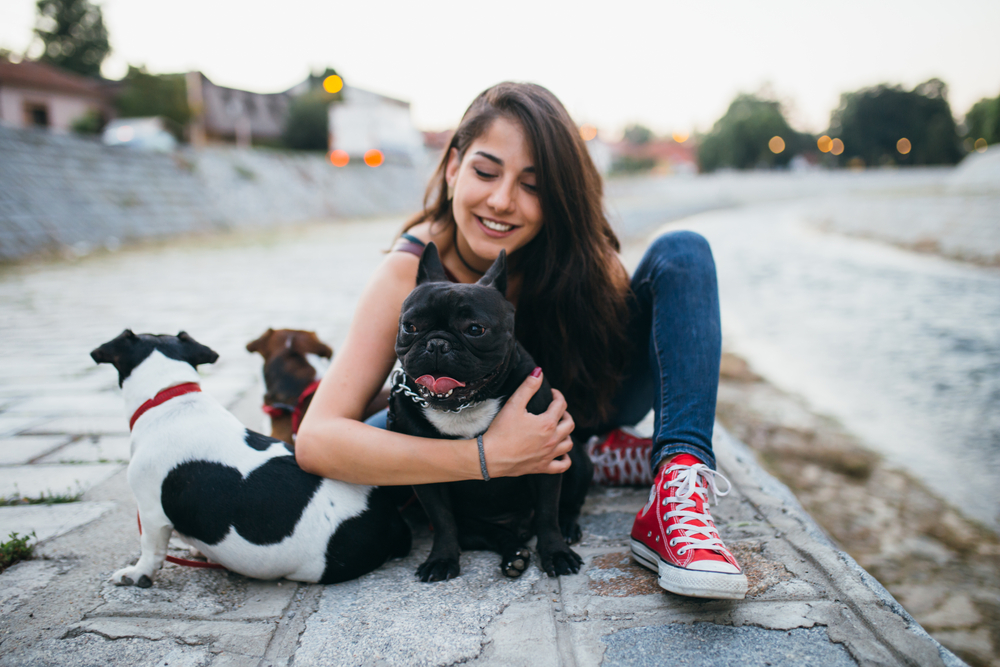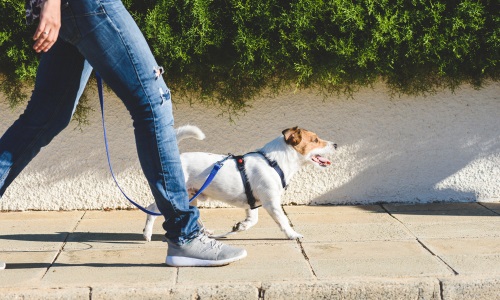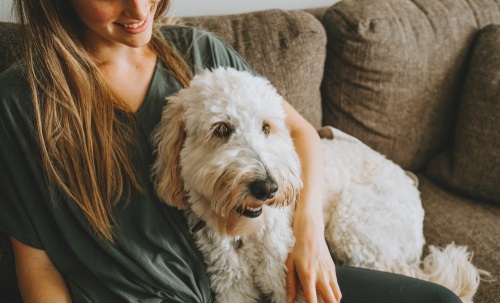Pets have a way of quickly evolving from mere companions to beloved family members, with all the trials, tribulations, and great stories that come with that distinction. However, unlike human family members, a dog or cat never reaches an age where they’re capable of taking care of all of their own needs. Sure, they may become more independent, or learn to “hold it” a little longer, but ultimately they always need someone to look after them at least once a day.
When pet parents leave the home for overnight or longer, it’s usually not feasible to take a pet in tow. Not only are they prone to car sickness on long journeys, it’s often difficult to find hotel rooms or resorts that welcome animals alongside humans. On flights, travel can be extremely stressful for pets, even in the nicest carrying crates, and will incur a substantial cost as well. With all that in mind, it’s usually in everyone’s best interests that pets remain at home when their pet parents travel – which means relying on a pet sitter.
What Is A Pet Sitter?
In the most general terms, pet sitters are exactly what their name implies – babysitters for pets. While owners are traveling or away from their homes, pet sitters ensure pets are able to “use the facilities” on a regular schedule by, for example, taking dogs on walks and scooping/replenishing cat litter. They are also responsible for feeding and replenishing water for pets to access, and may also complete additional pet-related tasks, such as light grooming, bathing, or administering medicine to pets with ailments or dietary concerns.
These individuals give pet parents great peace of mind, allowing them to focus on their vacation or reason for travel instead of worrying about their furry friends back home. When the needs of a dog are carefully considered and listed out beforehand, there’s no moment of concern or panic while flying across the country or even the world. In other words, well-written instructions for dog sitter services plus a competent individual caregiver equal a good time for both owner and pet.
Where Do I Hire A Pet Sitter?
Sometimes the need for a pet sitter is known well in advance – a trip booked two months out, for example – leaving plenty of time to interview and consider different individuals carefully. Some families look to friends, family, and associates when these scenarios arise, and will offer a token amount of payment to look after a pet. Others use a professional pet sitting service, either due to preference or a social circle that isn’t available to help on those specific dates.
In situations like out-of-state medical emergencies, a professional pet sitting service is sometimes the only help available on short notice. A recent trend of app-based “gig worker” pet sitting companies has made these already stressful situations a lot easier; a quick search for “pet sitter apps” in the Google Play store or the Apple App store reveals a number of choices. Experts still recommend, however, signing up with these services before they’re needed for the best results – there are questionnaires and forms that need to be filled out, and trying to do them quickly while dealing with an emergency is less than ideal.
Neighborhood groups and apps are another resource for local pet sitters if a friend or family member isn’t available, but a service still feels too commercial. Asking for recommendations is a great place to start, as there will be a variety of first-hand experiences to help narrow down excellent potential cat or dog sitter candidates – not to mention rule out completely unsuitable ones.
Working With A Pet Sitter
Once a pet sitter has been selected, the ideal next step is to introduce the sitter to their furry charge. Arrange a meeting at the home during a mutually convenient time, and allow the sitter and dog some time and space to get to know one another. A little light bribery – e.g., a favorite treat, a walk, some belly rubs – won’t go wrong here, and will make a great first impression on a cautious or uncertain pup.
When a dog sees, smells, and experiences the “new” human in close, friendly proximity to his pet parent, he will be more at ease if the same human shows up alone later on. This makes the pet sitting experience less jarring on a canine companion, and reduces the chance that separation anxiety or stranger apprehension will trigger bad behavior once he’s unsupervised once more.
Use the time together to escort the sitter around the home, pointing out any unusual door latches, “off limits” areas, and “potty corners” in the yard so they know what to expect. If time permits, going through the normal routine while the sitter observes can also be helpful – and may also be easier than laboriously writing down everything from start to finish.
Technology & Pet Sitting
With technology such as in-home and exterior security cameras both affordable and readily available, more than 30% of American homes currently have some sort of smart devices installed. If a pet parent has access to cameras inside or outside of their home, there’s no harm in checking up on their furry friend while they’re traveling. While tech etiquette is still evolving, most experts agree it’s a good idea – and polite – to allude to any existing cameras in pet-sitting instructions.
For the security-minded pet parent, smart door knobs, locks, and lights can also be configured to let a sitter in at a specific time without giving them the same unfettered access a physical key would. As a bonus, this step can also help save electricity and provide the illusion of occupancy through lighting, potentially deterring opportunistic thieves while a pet owner is on vacation.
Pet Sitting Instructions
Similar to instructions created for babysitters, a list of instructions for dog sitter or cat sitter caregivers should always include key information. Not sure what information to leave for a dog sitter? Stick to the basics and include the following info:
- Any pet parent contact information, including cell phone number and the name and room number of a hotel (if applicable).
- The dog’s vet and emergency vet contact information, including the phone number and street address of the vet office(s), hours of operation, dog’s name, and pet parent’s name as it appears in the vet’s files. This will expedite treatment if a medical concern arises, improving the chances that an injured or ailing dog will make a full recovery.
- Identifying information on the dog, such as his microchip status (has it/doesn’t have it), neutering / spaying status, vaccinations, and a recent picture. While pet sitters are careful and vigilant with the dogs they watch, accidents do happen, and mischievous dogs do slip their collars. While this information will hopefully never need to be used, it’s better to ensure a sitter has it all on hand if a “Houdini scenario” arises.
- Any allergies or known medical conditions, including common symptoms – these are important not only for catching serious issues early, but also de-escalating panic if known, harmless symptoms appear. If medicine is necessary for these conditions, be sure to put it in a prominent place as well, such as on a kitchen counter.
- The location of the pet’s food, and how much to give them at each feeding time. Even if this was explained on a previous visit or in paperwork given to a sitting service, it never hurts to have an additional reminder. Make sure there is enough food for the amount of time the dog sitter will be stopping by.
- The location of clean up materials in case of an accident. Even dogs that are normally impeccable with house training may have issues over stress, separation anxiety, or territorial concerns at a sitter – who may smell like other dogs or cats from previous clients – entering “his” space.
- And finally, any non-obvious cautions or needs. No one knows a dog better than his human companion, so a quick mention that “his hips are sore and he doesn’t like being petted there” or “he’s an excitement-urinator, so get him outside quickly” can help a sitter do their job more efficiently.
Whenever possible, these dog sitter instructions should be typed and printed to ensure they’re clear and legible, rather than handwritten. Ideally, a digital copy can be emailed to the sitter or the service they work with for easy reference as well.
Having written instructions eliminates much of the potential for miscommunication, and gives a sitter an easy-to-follow guide if uncertain situations arise while they’re with a (likely still largely unfamiliar) dog.
Sources Cited:
1) Alt, Kimberly. “Best Pet Sitting Websites 2021: Rover vs Care vs Fetch vs PetSitters.” Canine Journal (caninejournal.com), January 6, 2021, https://www.caninejournal.com/dogvacay-vs-rover-vs-care-vs-fetch-vs-petsitters/. Accessed January 31, 2021.
2) “How to Choose the Right Pet Sitter.” Petmate (petmate.com), (no published date), https://www.petmate.com/how-to-choose-the-right-pet-sitter/article/a10027. Accessed January 31, 2021.
3) “A Checklist for Your Dog Sitter.” American Kennel Club (AKC) (akc.org), January 31, 2017, https://www.akc.org/expert-advice/home-living/dog-sitter-checklist/. Accessed January 31, 2021.
4) Desfosse, Rebecca. “The Ultimate Dog Sitter Checklist.” Care.com (care.com), December 8, 2015, https://www.care.com/c/stories/6217/the-ultimate-dog-sitter-checklist/. Accessed January 31, 2021.







